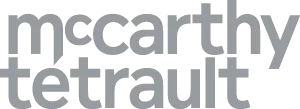This is the final part of our three-part series on mitigating increasing risk exposure to forced labour in the supply chain, which has now become a key element of the "S" or social component in an organization's ESG strategy. This follows an overview of the "global crisis" that is forced labour in Part I and an analysis of the steps Canada has taken and is likely to take to address such concerns in Part II. These steps include imposing and enforcing a ban on the importation and distribution of products made in whole or in part from forced labour (the "Import Ban"),1 as well as implementing supply chain disclosure legislation.
This Part III concludes the series by setting out a number of recommended strategies for addressing forced labour risks in supply chains. As governments and media step up awareness of human rights concerns in the supply chain, other stakeholders, including investors and consumers, are also increasing the pressure on companies to ensure they have taken meaningful steps to mitigate these risks.
Now is the ideal time to take action: this issue is attracting increasing attention and scrutiny
Notwithstanding the demise of Bill S-216,An Act to enact the Modern Slavery Act and to amend the Customs Tariff,2 the emphasis on transparent supply chains and ethical imports and sourcing is only likely to grow in Canada. Indeed, supply chains are attracting increasing attention and scrutiny with each passing day, from the Canadian government, the media and investors and other stakeholders.
In Part II, we reported that the Canada Border Services Agency ("CBSA") confirmed this past spring that it had not yet started enforcing the Import Ban, which was reportedly due to delays related to establishing the program's legal framework, including developing indicators to identify goods produced by way of forced labour. On November 15, 2021, however, the Globe and Mailreported that this is no longer true - in communications with the Globe and Mail, the CBSA acknowledged one interception related to women's and children's clothing originating from China. The same article calls for Canada to take a stronger stand on this issue, quoting a number of government officials supportive of that position. For example, Liberal MP John McKay is quoted as saying this is "an opportunity for Canada to take a look in the mirror and rid our supply chains of forced labour".3
The CBSA is not the only government agency paying attention to this key issue. On November 10, 2021, Public Services and Procurement Canada issued a public statement confirming that deliveries from one of its medical glove suppliers, Supermax Healthcare Canada, are being held following allegations of forced labour practices in its supply chain in Malaysia. This follows a recent U.S. Investigation, which resulted in U.S. Customs and Border Protection ("CBP") issuing a Withhold Release Order against Supermax Corporation Bhd. and its subsidiaries based on information that reasonably indicates their use of forced labour in manufacturing operations. During its investigation, CBP identified ten of the International Labour Organization's ("ILO") indicators of forced labour.4 According to its statement, Public Services and Procurement Canada will determine next steps once it reviews the results of an ongoing independent audit.
As we noted in Part II of this series, forced labour is also an area of focus for the media. In particular, we highlighted CBC News' ongoing Marketplace investigation, which has revealed links between Canadian grocery stores and tomato products connected to Chinese forced labour.5 In respect of the same investigation, CBC News also recently reported about Canadian retailers selling clothing from a factory suspected of secretly using North Korean forced labour, raising both forced labour and economic sanctions concerns.6
Recommended strategies
In this context, it is important for businesses to take this opportunity to think critically about their supply chains, to assess the extent to which risks of forced labour exist, and to consider how to take action to address those risks.
To mitigate risk exposure to forced labour in your supply chains, we recommend the following preliminary strategies:
- Establish and support an organizational culture
focused on preventing human rights violations, including the use of
forced labour.
- It is important to ensure that management, every business unit, and each employee supports and is aligned with this objective.
- For example, business units responsible for purchasing should be incentivized and encouraged to take the risk of human rights violations into account when making buying decisions, as opposed to being focused exclusively on quality and price.
- Implement or modernize company policies, practices,
and training programs related to forced labour and supply chain
ethics.
- Consider implementing or modernizing company policies and procedures on forced labour.
- Not only will this help to ensure compliance with potential incoming supply chain disclosure legislation, but it will also serve to demonstrate overall adherence to strong social and good governance practices, consistent with the firm's overall ESG strategy. It is also important to ensure all employees with supply chain functions are effectively trained in supply chain ethics.
- Gather information about your supply chain and
consider investing in tools to do so more
effectively.
- Recognizing that consumer goods are comprised of inputs from countries around the globe, and processed, assembled, packaged, transported and consumed across many borders, the process for mapping such intricate supply chains is undoubtedly complex.
- Fortunately, there are tools to assist. For example, some companies use traceability or chain of custody tools. Other emerging tools include the use of block chain technology, online databases, and self-disclosure information systems, among others.7
- Be familiar with the indicators of forced labour -
these are the signs the CBSA will likely be looking for when
enforcing the Import Ban.
- According to the ILO, indicators of forced labour include things such as abusive working and living conditions, excessive overtime, and abuse of vulnerability, among others. Its report titled ILO Indicators of Forced Labour explains each of these indicators and others in greater detail. These indicators are intended to "help 'front-line' criminal law enforcement officials, labour inspectors, trade union officers, NGO workers and others to identify persons who are possibly trapped in a forced labour situation" and "represent the most common signs or 'clues' that point to the possible existence of a forced labour case".8
- Although the CBSA has not yet indicated how it will identify goods produced by way of forced labour (other than to say that it will be working closely with the Labour Program of Employment and Social Development Canada, which is preparing or will prepare reports to be shared with the CBSA signalling when goods are likely mined, manufactured or produced by forced labour),9 the U.S. CBP relies upon these indicators in its own assessments.10 Accordingly, these indicators should provide helpful guidance in lieu of additional information from the CBSA.
- Be particularly aware of high-risk sectors and
source/destination countries - subject such goods to special
scrutiny.
- Certain source countries and sectors present a greater risk of forced labour, as outlined further in Canada's 2018 Global Slavery Index. This Index identified high risk imports from a number of sectors in Argentina, Brazil, China, Dominican Republic, Ghana, India, Indonesia, Japan, Malaysia, Peru, Russia, South Korea, Taiwan, Thailand, and Vietnam. These factors should be taken into account and such products should be the subject of special scrutiny.
- Global Affairs Canada has recognized China as one such source country, requiring Canadian companies that are (i) sourcing directly or indirectly from Xinjiang or from entities relying on Uyghur labour, (ii) established in Xinjiang, or (iii) seeking to engage in the Xinjiang market to sign an "Integrity Declaration" attesting awareness of Canadian law with respect to the prohibition of forced labour, as well as to conduct due diligence to ensure suppliers in China are not sourcing directly or indirectly from Chinese companies implicated in forced labour or other human rights violations.11
- Canadian exporters in high-risk sectors should be especially cautious - for example, exporters of sensitive technologies should be cognizant of the use of such technologies for abusive and systematic surveillance of the Uyghurs in Xinjiang. Indeed, Global Affairs has specifically highlighted "repressive targeting and surveillance measures" as human rights concerns in Xinjiang.12
- Be cautious when it comes to supplier audits and
certification regimes.
- Audits are a crucial part of the information gathering process.
- However, be aware that the effectiveness of supplier audits has been questioned for a number of reasons, including for taking a "check-the-box" approach that does not sufficiently include worker participation or interviews, and because workers may be prepared by management to provide inaccurate responses. Certification regimes, which are often based on audits, face the same challenges.13 Audit results and certifications should therefore be assessed critically.
- Implement robust supply chain due diligence
procedures that focus on more than just your immediate
suppliers.
- In respect of the Import Ban, CBSA guidance emphasizes that "[i]mporters are responsible for ensuring that any goods that they are importing into Canada are compliant with Canadian law" and that "[i]t is the responsibility of the importer to conduct due diligence on its supply chains to ensure that goods it imports into Canada are not mined, manufactured or produced wholly or in part by forced labour".14
- Importantly, forced labour is considered a "whole-of-supply-chain problem", meaning risks extend beyond immediate suppliers, comprising actors further upstream in the supply chain, such as suppliers engaged in the production of raw materials or other inputs to final products. This underscores the need to focus on upstream as well as immediate suppliers when conducting due diligence.15 A 2019 report by Alliance 8.7,16 titled Ending Child Labour, Forced Labour, and Human Trafficking in Global Supply Chains ("Alliance 8.7 Report"), suggests mainstreaming due diligence into key decision-making processes, such as sourcing from a new country, developing a new product or service line, changing the inputs of a product or service, and engaging in new forms of business relationships (g., with new clients, new markets or M&A).17
- A number of international instruments, including the OECD Due Diligence Guidance for Responsible Business Conduct, provide helpful roadmaps for businesses looking to implement due diligence approaches covering the full supply chain.
- Even if not legally required, consider being
transparent about company practices and risk assessments related to
forced labour.
- Investors and consumers alike are paying keen attention to this issue. Even in the absence of Canadian legislation addressing this topic, it is worthwhile considering adopting a transparent approach with regard to company practices and risk assessments related to forced labour, and well before the imposition of any reporting or due diligence requirements
Although global supply chains generate growth, employment, skill development, and technological transfer, they also give rise to significant human rights violations risk, and the Alliance 8.7 Report emphasizes the role and responsibility that all actors operating in this context have to ensure that these human rights violations are addressed.18
Addressing modern slavery has now become a critical consideration in an organization's ESG strategy. Pressure from government, media, investors, consumers, and other stakeholders is likely to continue to grow in the near term, raising significant financial, operational and reputational risks. This rapidly increasing awareness of potential forced labour and other human rights violations across the supply chain should be driving companies to ensure that they can clearly demonstrate that they have implemented effective polices and procedures to mitigate this risk.
Footnotes
1. As discussed further in Part II of this series, Canada recently implemented the Import Ban, which expanded upon the previously-existing ban on goods produced by way of prison labour. More specifically, on July 1, 2020, the Canadian Customs Tariff was amended as part of the implementation of the Canada-United States-Mexico Agreement, to prohibit the importation of goods that are produced wholly or in part by forced labour, from any country - not just from the United States or Mexico. The Import Ban is set out in subsection 136(1) of the Customs Tariff, which provides that the "importation of goods of tariff item No. 9897.00.00...is prohibited" and tariff item no. 9897.00.00, which references goods that are "mined, manufactured or produced wholly or in part by forced labour".
2. Bill S-216, An Act to enact the Modern Slavery Act and to amend the Customs Tariff, 2nd Sess., 43rd Parliament, online: https://parl.ca/DocumentViewer/en/43-2/bill/S-216/first-reading. As noted in Part I of this series, Bill S-216 was introduced in the Senate on October 29, 2020, passed its second reading on March 30, 2021, and was undergoing review by the Standing Senate Committee on Banking, Trade and Commerce before the election call, at which time the Bill died on the Order Paper. Bill S-216 was Canada's third bill addressing this issue, following in the footsteps of Bill S-211, introduced by Senator Miville-Dechêne in a previous legislative session, as well as Bill C-423, a Private Members Bill introduced into the House of Commons by Liberal Minister of Parliament John McKay in December 2018.
3. Steven Chase, "Canada seizes goods made with forced labour from China; MPs urge more action for Uyghurs" (November 15, 2021), Globe and Mail, online: https://www.theglobeandmail.com/politics/article-canada-seizes-goods-made-with-forced-labour-from-china-mps-urge-more/.
4. See U.S. Customs and Border Protection, "CBP Issues Withhold Release Order on Supermax Corporation Bhd. and its Subsidiaries" (October 20, 2021), online: https://www.cbp.gov/newsroom/national-media-release/cbp-issues-withhold-release-order-supermax-corporation-bhd-and-its.
5. Eric Szeto, Caitlin Taylor, Asha Tomlinson, Matteo Civillini & Winston Szeto, "Canada's grocery chains stocked with tomato products connected to Chinese forced labour" (October 29, 2021), CBC News, online: https://www.cbc.ca/news/canada/marketplace-tomato-products-investigation-1.6227359.
6. Anu Singh, Katie Pedersen, Winston Szeto & David Common, "Canadian brands sold clothing from factory suspected of secretly using North Korean forced labour" (November 5, 2021), CBC News, online: https://www.cbc.ca/news/canada/marketplace-canadian-brands-forced-labour-1.6236820.
7. See International Labour Organization, Organisation for Economic Co-operation and Development, International Organization for Migration, and United Nations Children's Fund, "Ending child labour, forced labour and human trafficking in global supply chains" (2019), online: http://mneguidelines.oecd.org/Ending-child-labour-forced-labour-and-human-trafficking-in-global-supply-chains.pdf at 5, 62 [Alliance 8.7 Report].
8. International Labour Office, "ILO Indicators of Forced Labour", online: https://www.ilo.org/global/topics/forced-labour/publications/WCMS_203832/lang--en/index.htm at 2.
9. CBSA, Memorandum D9-1-6, "Goods manufactured or produced by prison or forced labour" (May 28, 2021), online: https://www.cbsa-asfc.gc.ca/publications/dm-md/d9/d9-1-6-eng.html at para. 6 [D-Memo]. See also Employment and Social Development Canada, "Supporting the Forced Labour Import Ban and Social Corporate Responsibility (CSR) initiatives", online: https://www.canada.ca/en/employment-social-development/services/labour-relations/international/support.html.
10. See e.g., U.S. Customs and Border Protection, "CBP Modifies Forced Labor Finding on Top Glove Corporation Bhd." (September 9, 2021), online: https://www.cbp.gov/newsroom/national-media-release/cbp-modifies-forced-labor-finding-top-glove-corporation-bhd ("CBP modified a Finding after thoroughly reviewing evidence that Top Glove has addressed all indicators of forced labor identified at its Malaysian facilities...").
11. Global Affairs Canada, ""Integrity Declaration on Doing Business with Xinjiang Entities", online: https://www.international.gc.ca/global-affairs-affaires-mondiales/news-nouvelles/2021/2021-01-12-xinjiang-declaration.aspx?lang=eng.
12. Global Affairs Canada, "Global Affairs Canada advisory on doing business with Xinjiang-related entities (Advisory)" (January 12, 2021), online: https://www.international.gc.ca/global-affairs-affaires-mondiales/news-nouvelles/2021/2021-01-12-xinjiang-advisory-avis.aspx?lang=eng.
13. Alliance 8.7 Report, supra note 7 at 63.
14. D-Memo, supra note 9 at para. 10.
15. Alliance 8.7 Report, supra note 7 at 16, 72. The Alliance 8.7 Report provides that between 28-43% of child labour in global supply chains occurs in upstream segments of supply chains, in production activities such as raw material extraction and agriculture.
16. Alliance 8.7 is "an inclusive global partnership committed to achieving target 8.7 of the 2030 sustainable development goals": https://www.alliance87.org/the-alliance/.
17. Alliance 8.7 Report, supra note 7 at 72.
18. Ibid at 1.
To view the original article click here
The content of this article is intended to provide a general guide to the subject matter. Specialist advice should be sought about your specific circumstances.




